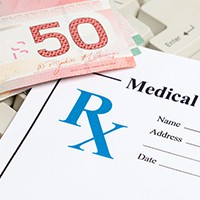Last updated: April 28 2015
Brush Up on Claiming Medical Expenses - Part 2

Even at the end of tax season, some last minute tax tips can help clients and their families win extra dollars this year – or possibly next. There are some eyebrow-raising write-offs under the category of medical expenses for example, that might make a knowledgeable tax expert the most interesting person around the water fountain.
Did you know, for example, a claim can be made for the following expenditures?
- Medical marijuana or marijuana seeds - but they must be purchased from Health Canada, or a licensed person under Marijuana Medical Access Regulations (MMAR). Costs of growing the weed, however, are not deductible.
- The incremental cost of acquiring gluten-free food products are deductible here too, but you’ll need to compare the cost of gluten-free vs non-gluten free food products for a patient who has celiac disease. That person must also have a written certificate from a medical practitioner that a gluten-free diet is required. Deductible costs include the incremental cost of gluten-free bread, bagels, muffins, and cereals, rice flour and GF spices. Only the costs related to the person with celiac disease are to be used in calculating the medical expense tax credit . . . so if others consume the same food with the patient, a proration is necessary.
Remember, the claim for medical expenses is reduced by 3% of the claimant’s net income (or the dependant’s net income if claiming expenses for other dependants) to a maximum of $2,171 – something your tax software will do in the background calculations.
This maximum is reached when net income is over $72,366. Generally that means the spouse with the lower income will get the biggest claim, but it is worth noting if that spouse is not taxable. In those cases, carry the receipts forward for a possible future claim, as medical expenses can be claimed in the best 12 month period ending in the tax year.
Here is an example, excerpted from Jacks on Tax, now featuring a tax-updating supplement.
Kristina’s net income for 2014 was $75,000. Her medical expenses total $12,500. Of that, $6,000 were for her son, Drew, and $6,500 were for Trevor, her grandfather, who lives with her and whose income for the year was $10,000.
Kristina’s medical expenses were:
| Drew: | $6,000 – $2,171* = | $3,829 |
| Trevor: | $6,500 – ($10,000 x 3%) = | $6,200 |
| Total: | $10,029 |
* $2,171 because $75,000 x 3% = $2,250 which exceeds $2,171
How hard is it to accumulate enough medical expenses to make claiming them worthwhile? As you can see, that depends on your net income (line 236 of the tax return) and the size of the claim. The real dollar return is 15% federally, and about 6-10% more provincially, depending on where you live.
Remember, if both spouses are taxable, claim the expenses on the return with the lower income for the best benefit. Naturally, there can be a lot of receipts, especially for prescription drugs or in cases where there is partial reimbursement through a medical or group health plan. At a minimum, try to keep everything organized by depositing the receipts into 12 separate envelopes, each one marked for a different month; this small effort can make tax filing time less onerous and less expensive if you are paying a tax specialist for help.
Evelyn Jacks is President of Knowledge Bureau, where you can find tax, investment, retirement, succession and business services courses. Click here to sign up for your free copy of Knowledge Bureau Report.
Click here to read Part 1 of Brush Up on Claiming Medical Expenses.
